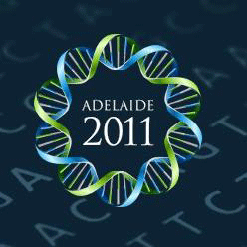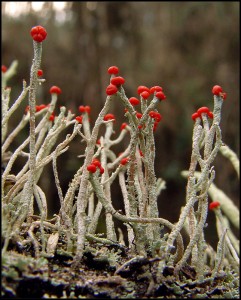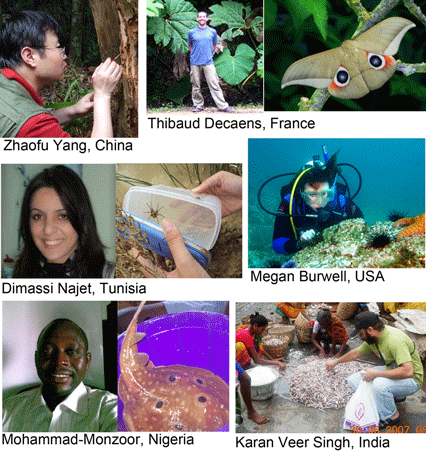A new Nature paper by Barbara Block et al. of the top predators project of the Census of Marine Life, Tracking apex marine predator movements in a dynamic ocean, earns wide attention, Nature, Published online 22 June 2011, doi:10.1038/nature10082 including in the Washington Post and the German language media, which also quote Jesse.
News
Quiet Ocean Experiment
“An International Quiet Ocean Experiment,†co-authored by Jesse and 22 colleagues led by Ian Boyd and George Frisk, appears in the June 2011 issue of Oceanography magazine. The paper and project derive from Jesse’s 20 May 2009 commencement address at Dalhousie University
News Flashes
 You have 1 more day! Abstract deadline is 12 midnight tomorrow, June 15, for the Fourth International Barcode of Life Conference, Adelaide, Australia, 28 November-3 December 2011. Online submission form here.
You have 1 more day! Abstract deadline is 12 midnight tomorrow, June 15, for the Fourth International Barcode of Life Conference, Adelaide, Australia, 28 November-3 December 2011. Online submission form here.
Young scientists to help document what lives on Earth! Coastal Marine BioLabs (CMB), a private, research-based scientific educational organization in Ventura, California was awarded a 3-year NSF grant to train high school teachers and students in DNA barcoding, with the goal of contributing reference sequences to Barcode of Life Database. CMB students and their teachers will be part of the International Barcode of Life project, which aims to expand BOLD (currently about 1.2M barcodes from 130K species) to 5M records from 500K species, the largest biodiversity intiative ever. For more on how students are helping build the genetic database of global species diversity, see Sacramento Bee news story and CMB web page.
Barcode of Life Connect tops 1000 members! If you haven’t already, I encourage you to visit and join the Barcode of Life Connect site, a “network to allow DNA barcoding professionals to discuss issues, share profiles, form special interest groups, and more.”The more includes webinars and links to upcoming relevant conferences. The core of the site is the chance to connect with like-minded barcoding professionals, either directly through their profiles or through discussion groups–so far there are 40 groups ranging from “Medicinal Plants” to “Madagascar” and “Portugese-Speaking Barcoders.”
To get an idea of how barcoding has taken hold around the world, particularly with young scientists, try perusing recent pictures posted by Connect members–I take the liberty of re-posting some images of the investigators and their specimens-enjoy!
Nighttime Illumination
Concerned about ecological effects of nighttime illumination, we take note of an important research project on ‘Loss of the Night’ of Franz Hoelker and colleagues in Berlin:
Forest Density Press Release 5 June 2011
The Press Release announcing the publication of our analysis on changes in forest density in nations around the globe, performed in conjunction with researchers at the University of Helsinki, provides a helpful map of changes in forest density for those nations studied in the paper:. Rautiainen A, Wernick I, Waggoner PE, Ausubel JH, Kauppi PE, 2011 A National and International Analysis of Changing Forest DensityPLoS ONE 6(5): e19577.
The Sunday 5 June publishes an excellent article about forests by Andrew Marszal that reports on our recent analysis of forest density. http://www.independent.co.uk/environment/nature/forests-fight-back-all-over-the-world-2293215.html
The Sunday 5 June Independent published an excellent article about forests by Andrew Marszal that reports on our recent analysis of forest density.
French Film Festival in Richmond VA
On Saturday 26 March 2011 the annual French Film Festival in Richmond VA organized by Peter and Francoise Kirkpatrick featured Galatee’s film Oceans. Over 1000 people filled the magnificent Byrd Theater and also asked questions about the film to filmmakers Jacques Perrin, Olli Barbe, and Mathieu Simonet and science advisor Jesse Ausubel in a discussion moderated by Peter Kirkpatrick. We post photos of the theatre and panel.
On February 18, 2011 the Martha’s Vineyard Gazette ran a story about Jesse and the Census of Marine Life
On February 18, 2011 the Martha’s Vineyard Gazette ran a story about Jesse and the Census of Marine Life, including the new lobster Dinochelus ausubeli.
New York Times profile of PHE Director Jesse Ausubel April 26, 2011
On 26 April the New York Times ran a profile by Nicholas Wade about the span of Jesse’s career, “Commodore of a Global DNA Census.â€
Learning about lichens with DNA
 In 1867 Swiss botanist Simon Schwendener was the first to recognize that lichens were symbiotic associations of fungi and algae (or, as subsequently discovered, cyanobacteria) (for more info, try this EOL podcast on lichen–“a tropical rainforest in miniature”). Today about 13,500 species are described (lichens are named for fungal component), representing 18% of the 74,000 known fungi. It is remarkable that so few fungi have been named, given that estimated diversity is 1.5 million (Hawksworth, 2001). This presumably reflects difficulty of morphologic diagnosis of often microscopic, unculturable organisms with diverse life forms and highlights a need for molecular methods. Several recent epidemics causing serious animal and plant mortality have turned out to be newly recongized fungi [including Batrochochytrium dendrobatidis (chytridiomycosis in amphibians), Geomyces destructans (White-nose Syndrome in bats), Cryophonectria parasitica (Chestnut blight), and Ophiostoma spp. (Dutch elm disease)], hinting at the hidden diversity and importance of fungi.
In 1867 Swiss botanist Simon Schwendener was the first to recognize that lichens were symbiotic associations of fungi and algae (or, as subsequently discovered, cyanobacteria) (for more info, try this EOL podcast on lichen–“a tropical rainforest in miniature”). Today about 13,500 species are described (lichens are named for fungal component), representing 18% of the 74,000 known fungi. It is remarkable that so few fungi have been named, given that estimated diversity is 1.5 million (Hawksworth, 2001). This presumably reflects difficulty of morphologic diagnosis of often microscopic, unculturable organisms with diverse life forms and highlights a need for molecular methods. Several recent epidemics causing serious animal and plant mortality have turned out to be newly recongized fungi [including Batrochochytrium dendrobatidis (chytridiomycosis in amphibians), Geomyces destructans (White-nose Syndrome in bats), Cryophonectria parasitica (Chestnut blight), and Ophiostoma spp. (Dutch elm disease)], hinting at the hidden diversity and importance of fungi.
Back to lichens–in March 2011 New Phytologist, researchers from Royal Botanic Garden (RBG) at Edinburgh and Kew report on DNA barcoding of lichenized fungi using internal transcribed spacer (ITS) region. ITS has been widely used in fungal taxonomy and has been proposed as a standard barcode region for this group (the standard barcode for animals, COI, has so far been difficult to reliably amplify from the diversity of fungi either due to variability at primer binding sites or introns). ITS refers to 2 regions in the nuclear ribosomal RNA gene complex (5′ external transcribed sequence—18s rRNA—ITS1–5.8s rRNA—ITS2—28s rRNA—3′ external transcribed sequence), which is present in several thousand copies in each cell. Advantages of ITS as a barcode region include availability of broad-range primers that bind to conserved regions in 18s and 28s rRNA; presence of multiple copies per cell, facilitating recovery from small or degraded samples; and the legacy of ITS fungal sequences in GenBank. Disadvantages of ITS as barcode locus are that is a non-coding region, making it more difficult to align and compare sequences; multiple copies per cell of which may differ from one another; and presence of misidentified sequences in the legacy data.
Kelly and colleagues sampled 112 freshly collected and herbarium specimens from one genus (Usnea) including 16 of the 19 species occurring in the British Isles and 248 specimens from native woodland habitats in Britain, comprising “94 species from 55, 28, and 8 genera, families and orders, respectively.” In the latter floristic set, 66.0% of species were represented by 3 or more samples and 77.7% by 2 or more samples. DNA was extracted using DNAeasy Plant Mini Kit and amplifications were performed with sets of standard primers that amplify the entire ITS segment (ITS1-5.8s rRNA-ITS); nested PCR was performed on “a small number of samples that failed to yield a single discrete product with standard PCR.” If these failed to generate a suitable product for sequencing, then a “thin slice of a single apothecium” was placed directly into the PCR mix and amplified as above or using primers for ITS2 only. The full ITS region was obtained from 80.9% of combined 351 samples (75.9% of Usnea and 83.9% floristic). 22 (6.3%) of products showed heterogeneity on direct sequencing and required cloning to obtain suitable products for sequencing. The commonest regions for failure were no amplification [7.1% overall, largely with older (>3y) specimens; and amplification of non-target fungi (2.0% overall, only with field samples from floristic dataset)].
Is there a “barcode gap” (intraspecific<<interspecific distance) among fungal ITS sequences? In this study at least, usually yes. The RBG researchers defined clusters as nodes with ? 70 BP under BIONJ method or PP ? 0.95 under Bayesian inference. Under these criteria, species discrimination was 73.3% for Usnea dataset and 92.1% for floristic dataset. Simple BLAST analysis was also usually accurate–80% of Usnea species and 92.1 of floristic species were correctly assigned. This bodes well for cataloging the “dark matter” of fungal biodiversity using ITS DNA barcodes. So little is now known, it is exciting to contemplate what will be learned!
